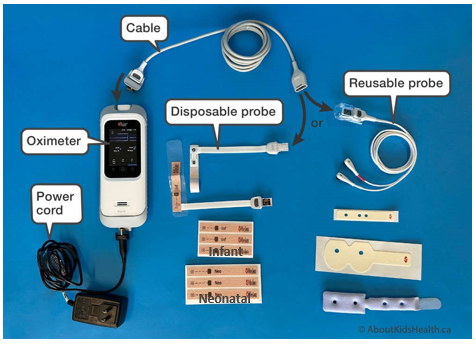HINT: What are signs a G tube stoma may be infected?
Connected Care Quick Hits are up to date and evidence based recommendations for the care of children with medical complexity & technology dependence, from hospital to home.
HINT: What are signs a G tube stoma may be infected?
SITUATION:
This Quick Hit was developed from Connected Care Live consults by home and community care providers as well as family caregivers regarding G tube stoma assessments.
BACKGROUND:
Many children with medical complexity rely on enteral feeding tubes to support nutrition, hydration, and/or medication administration. G/GJ tube stomas are potential sites of skin infection, hypergranulation tissue, skin breakdown, and/or sensitivity. Understanding what a healthy stoma looks like can provide reassurance to providers and caregivers when caring for a child with an enteral tube.
ASSESSMENT:
Healthy G tube stomas may have a distinct pink, red, or darker ring around it, that does not spread across the abdomen. It is normal for thin, clear yellow or green sticky drainage to be present around the stoma. The drainage can be cleaned daily, to prevent build up.
Examples of healthy G tube stomas
A stoma may be infected if any of the following signs are present:
Increased and/or spreading redness of the skin around the tube
Thick green or white, or foul-smelling discharge from the stoma
Swelling
The skin feels warmer around the stoma than the rest of the skin
Pain or increased tenderness to stoma
Abscess formation (a collection of pus under the skin)
Examples of infected G tube stomas
RECOMMENDATION:
Connected Care recommends daily stoma care that includes daily washing of the stoma with soap and water, then pat dry or air dry.
If infection is suspected, and the child is tolerating feeds and appears well:
Monitor the site.
Mark any redness with a pen to observe if the redness is spreading over time
Contact the G Tube Resource Nurse or primary care provider during business hours.
First line of treatment may be a topical or enteral tube antibiotic. If it is after hours and the child is otherwise well and tolerating feeds, families may choose to use a topical antibiotic (e.g Polysporin) as an over-the-counter medication. The families may choose to apply it while waiting to contact the G Tube Resource Nurse or medical team.
Monitor for signs of spreading infection or systemic illness:
These include fever, irritability, or any other concerning sign that the child’s safety is at risk. If there is concern for systemic infection, seek urgent medical attention.
For additional guidance after hours, weekends, and holidays, contact Connected Care Live
Be prepared to share a photo of the stoma
Connected Care Live is not to be used in the event of an emergency.














